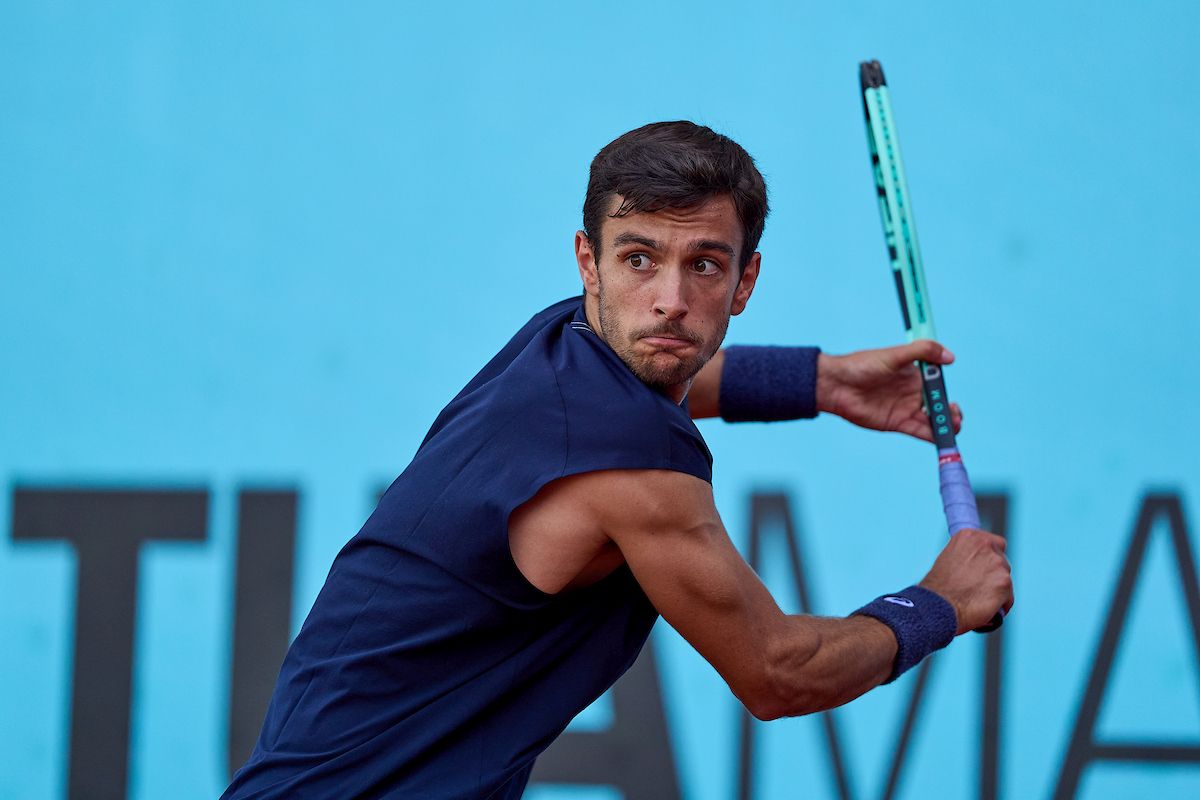Some of the fans were rubbing their eyes in disbelief on Tuesday in the Manolo Santana Stadium. Two Top 20 players were playing for a ticket to the Mutua Madrid Open quarterfinals. Nothing unusual about that. However, the surprising thing about the encounter was that both men, Italy’s Lorenzo Musetti and the Greek Stefanos Tsitsipas, are currently the biggest exponents of a shot that is under serious threat of extinction: the one-handed backhand.
Musetti took the spoils (7-5, 7-6 in nearly two hours) in a match that harked back to the twentieth century. In today’s game there are barely any players who choose to hit their backhand with just one hand on the racket. In fact, Musetti and Tsitsipas are the only two players in the Top 20 to employ the shot. The other 18 all use a two-handed grip.
The contrast is stark if we take a look into the past. In 1973, when the ATP published its first ranking, nine of the top ten players hit their backhand with one hand. However, little now remains of that tactical, serve-and-volley form of tennis. As the decades have gone by, and as the sports industry has evolved – both in terms of technology and fitness – tennis has become a much more physical discipline and the ball is thumped ever harder. The modern player is strong, with long arms, with a thunderous serve, a frightening forehand… and almost always a two-handed backhand.
“Aesthetically and stylistically speaking, the one-handed backhand is undoubtedly one of the most beautiful shots there is. But in today’s tennis, which is becoming increasingly powerful, there is no one-handed backhand that can challenge a decent two-handed backhand in terms of returning and ease of execution”, said Musetti, the current ATP world No. 11 a few months ago. “It’s to be expected that it’s becoming less common as the ball speeds have increased so much since the 80s and 90s, when there was more chance of rallies and using variants like serve-volleying”.
Musetti is so convinced that the one-handed backhand has no future, that he even said he would always recommend teaching children to hit it with two hands. Tsitsipas, however, is more of a champion of the shot that perhaps best defines his game and was employed with such prowess by two of the best players of recent times; Roger Federer and Stan Wawrinka.
“It’s a difficult shot to master and perfect. Players tend to choose the two-handed backhand because of how easy it is, because it’s less complicated to learn”, said the Greek. “I feel like the one-handed backhand is the most beautiful shot in tennis and the most difficult to learn. Also, on clay courts, where the ball bounces a lot, it can be a great weapon. So I think it’s an attractive shot that, if you perfect it properly, can be a lethal weapon for those that feel confident with it”.
A champion’s reaction
The all two-handed backhand clash in the Manolo Santana Stadium was a lopsided encounter in the early exchanges. Tsitsipas, a finalist on the Madrid clay in 2019, came flying out of the blocks to take a 5-2 lead in the first set. He even had a set point on the return, but Musetti neutralised it before stringing together five games to seal the first step of his comeback.
“It was my first time in the Manolo Santana Stadium and it feels pretty different to the other courts. At first I found it difficult to find my rhythm and the ball, because it bounces more on this court and I found it difficult”, explained Musetti in his on-court interview.
“But I managed to hang in there. I was patient and that gives me confidence. For now, I don’t want to talk about the rankings, I just want to have a great tournament and to keep winning matches in order to build my confidence”, added the Italian, who is now provisionally in the Top 10. His next opponent in the Caja Magica, for a place in the quarter-finals, will be Australia’s Alex de Minaur, who beat Denis Shapovalov 6-3, 7-6 (7-3).




